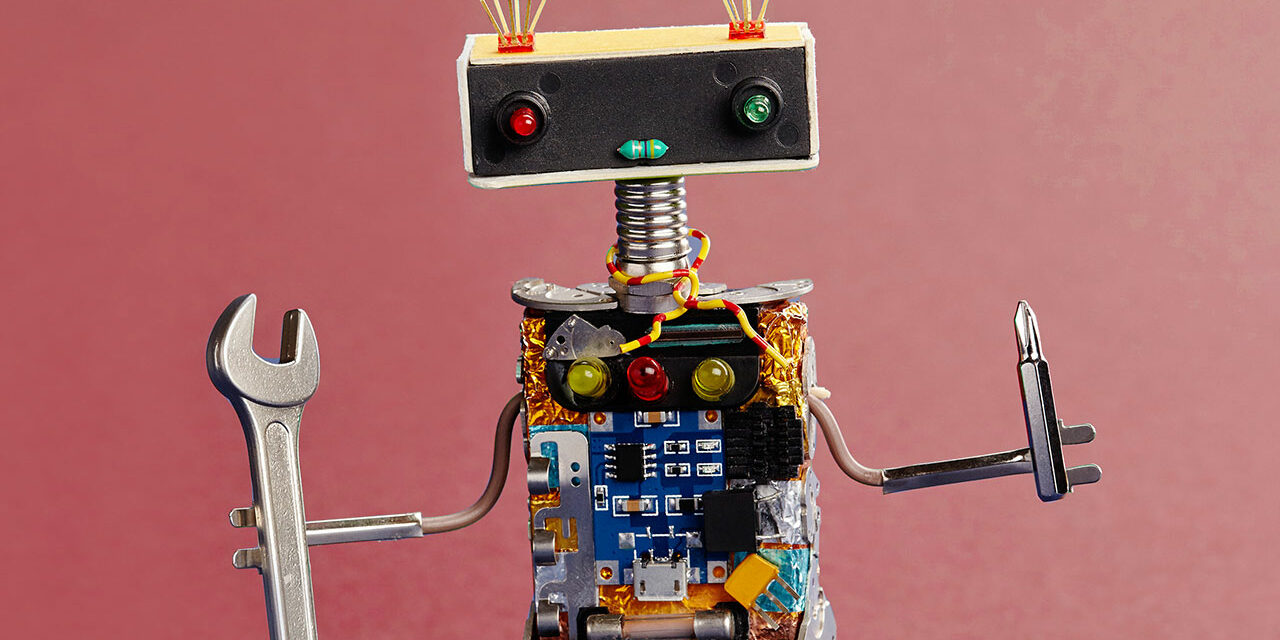Before we delve into some of the pros and cons of Bitcoin, Gold and the Australian dollar for the small business owner I think it’s first important to lay the groundwork so we can all understand the fundamental issue that each of these currencies are trying to solve. It all starts with the meaning of value.
The money that we use wields considerable value and power. For an Australian small business owner, nothing can be more important, yet so often misunderstood.
The forces of inflation on earned value are rarely considered in the day-to-day hustle of our everyday lives, and yet those who carry a long historical perspective appreciate the very real risks here. One needn’t live in Zimbabwe or post World War II Germany to be affected – a glance at a chart of the US dollar since 1913 shows a stunning 96% loss of purchasing power (i.e. value). Woe on any company who has chosen to keep their US bills under a mattress for the last 100 years!
Just as energy from the sun transfers from plant, to animal, to heat; value is also similarly transferred from work, to money, to inflation. Money is the instrument that dictates most of our lives. It is our commonly accepted portable store of wealth used as the medium of exchange for most transactions we participate in.
How to effectively manage this store of value is as old as the economy itself. The issue is key to government, business and to each of our personal lives. A stable currency allows businesses the ability to plan ahead, predict future performance based on historical figures, save, buy, and measure success.
With most of the world’s currency now ‘floating’ on the market, value is a moving target. That bit of paper you have in your pocket with all the security bits and pieces all over it is actually shifting in value every millisecond. More often than not, as most Central Banks like to encourage a small amount of inflation, it is slowly decreasing in fundamental worth over the long term.
This changing landscape of value can be a problem for Australian businesses trying to understand the lay of the land, and to invest capital effectively to at least match the rate of inflation into the future. The loss of purchasing is effectively a silent tax eating away at the value of notes held, requiring more notes to buy the same thing into the future. Although some economists argue this inflation can be a good thing in the right amounts, if done in excess it can lead to undesired outcomes such as: investment misallocation, a punished savings class, high-priced food, oil prices, and misappropriated investment amongst other issues.
These are among the fundamental reasons for the recent launch of crypto-currencies like Bitcoin and the extraordinary run-up in the price of gold for most of the last decade. There is a growing interest in understanding these issues by the public and businesses at large as we enter one of the most volatile ages of currency choices in history. Each of these currencies offer unique benefits, so let us examine three of the most dominant methods of transferring value that have been popular forms of holding value in the past, the present, and maybe even in your own small businesses future.
GOLD (AND SILVER)
Although the days of carrying small bags of gold around ones person are likely over, it is impossible to touch upon the concept of currency and value without talking about gold. For thousands of years many cultures around the world have used gold and silver as dependable stores of value. Most central banks still hold reserves of gold to back up their currencies to this day. Some of the reasons that Gold has been such a successful currency for so long are:
- Finite supply – a holder of gold knows they are holding a set fraction of the earths total gold reserves (in fact the total amount of gold in the world could actually fit into about 3 Olympic sized swimming pools) and no more can be made.
- Easily divisible for smaller payments with no loss of material during the melting process
- Doesn’t corrode.
- Generally supply is pretty predictable over time.
- It requires work to get gold out of the ground, which gives it inherent value
- It is a charismatic metal that is beautiful to look at – gold is deeply ingrained in Indian ceremonial culture especially (although it is interesting to see the huge increase in Chinese demand for gold in the last year or so which has seen it overtake India as the worlds largest gold consumer)
The ancient Romans used gold in their coins to give the public confidence in its value. However, in a similar way to modern day society, the amount of gold allowed in new coins was slowly decreased over time in an ancient form of inflation.
For a small business accurate historical insights are critical to decision making. In understanding a little bit about the value of gold and its relative stability over thousands of years, you’ll appreciate why it’s interesting to take a look at prices of gold instead of dollars as an alternative way of gauging performance and value. Priced In Gold does a great job of looking at various markets first in dollar terms and then, for a completely different perspective, in golds terms. Have a look at this Business Insider article for 13 interesting charts that just might change your perspective, I’ve included some of the points from their article below:
- You’ve earning less money than you used to in terms of buying ounces of gold.
- The stock market looks a little different from 1985 when priced in gold.
- Coffee drinkers out there – rejoice! The price of coffee has been very stable in terms of gold for the last 20 years
Although it can be a mind bending experience reassessing history from this perspective, as a small business it is certainly worth a look to attempt to gain a more accurate view of business and market trends. Stare at these charts enough and soon you’ll start seeing the world in ounces instead of dollars for a different angle.
BITCOIN
Bitcoin is the new kid on the block, and with that comes with its fair share of strengths and weaknesses. Let’s look at some of Bitcoin’s strengths (most of them are also shared by Gold):
- Bitcoin is a cryptocurrency of limited supply
- It requires work to ‘mine’ Bitcoin and a cost via electricity and capital investment in computers
- It is easily divisible into much smaller payments (1 Bitcoin can be split into infinite smaller amounts for example 0.00001 – which might be a problem into the future in terms of practicality as already 1 Bitcoin is worth hundreds of dollars depending on what currency you are after)
- It is far better than gold as a convenient means of exchange with no ‘fractional notes’ needed as a matter of process to make the currency usable
- It uses highly secure encryption
- It is anonymous (this could also be a weakness depending on your perspective)
On the face of it Bitcoin seems to mimic many of Golds strengths, and be a far more convenient means of exchange. So should gold owners throw away their ‘barbarous metal’ and replace it will the more mobile and trendy Bitcoin? Not so fast – Bitcoin does have several major weaknesses:
- It doesn’t have the liquidity of the gold market… yet. This means that market players are more easily able to swing the price of Bitcoin up and down as they see fit. For example there are a few large ‘original’ Bitcoin owners that account for a substantial portion of the Bitcoin market that could sell at any time and ‘flood’ the market with liquidity that would decrease the value of each Bitcoin instantly and substantially.
- It can go to zero value. Part of the reason that gold is so valuable is that it has and probably always will be held in some demand. Assuming that gold suddenly loses all it’s value as a currency, it will still always retain its industrial (as an excellent conductor of electricity), ceremonial (it is traditional to give gold as a gift in Indian weddings) and general aesthetic demand.
- It is operating in a Cryptocurrency ‘free market’ with many other competitors – the Cryptocurrency game is still very new and Bitcoin, although it holds the lead for now, could lose this at any time to competitors that offer a better market exchange mechanism, improved security or other benefit that would lead to them becoming more widely used. In this case Bitcoin’s value would crash.
- Buying on a Bitcoin exchange – At Mt. Gox (a big Bitcoin exchange that went under) has proven, the investor must be wary in this new market. Do your research into the background of the company’s you are dealing with.
- Hacking – although the Bitcoin encryption itself is very secure this is no way to protect currency users from human error. Weak passwords or poor computer security make it easy for hackers to take full advantage here.
- Regulation – authorities are still toying with the idea of applying regulations to Bitcoin, or even allowing it as a currency at all. As a result there is an uncertain environment as to its future stability due to the changing opinions of world leaders. Incidents like the ‘Silk Road’ drug trade that Bitcoin enabled by virtue of its anonymity did not help this in the slightest.
- Lack of acceptability leading to speculation – this is perhaps one of Bitcoins largest flaws. The recent price increase in Bitcoin was driven primarily by spectators, not by participants using Bitcoin daily as a legitimate means of portable storage and exchange (ie for the payment of wages, or the purchase of goods). In other words many holders of Bitcoin were (and are) ‘weak hands’ – they were in it for the profit and so when the ‘deer in the headlights’ moment arrived when the price crashed, they were scared away very quickly. This would not have happened so quickly or suddenly if people’s wages had to be paid in Bitcoin, or if they required Bitcoin in order to purchase goods and services.
For those of you who are interested, take a look at this video from Motherboard which takes a look at a Bitcoin mining operation in China:
THE DOLLAR
The Australian dollar is the nationally accepted currency and means of exchange for the nation, but this too is not without its share of strengths and weaknesses, for example:
Strength: It is the accepted currency of the nation and all prices and wages are denominated by it.
Weakness: Due to inflation business must estimate prices with reference to the government issued CPI. There is no guarantee of the complete accuracy of this figure as it is simply a basket of goods measured with time and according to the rules each country’s government sets, which vary.
Strength: It is backed by the good faith of the Australian government and the army.
Weakness: A large part of the value of this bit of paper is the ‘faith’ of the consumer that the Australian dollar is worth anything at all. This means that a large portion of the value of the dollar is based around confidence in it, which must be maintained by the worlds various Central Banks (eg the RBA and the FED).
Strength: the nation can increase or decrease the supply of the money in times of crisis, to improve terms of trade for industry, or when the market reaches bubble territory in order to control the economy.
Weakness: this assumes that Central Banks can, in fact, accurately control the money supply and velocity in such away as to accurately control inflation and employment – historically they have had a rather poor track record of doing this – the internet stock bubble in 2000, and housing bubble of 2008 being recent examples of ‘irrational exuberance’ (Alan Greenspan, 2005) from overheated markets partly due to low interest rates. There is also a great temptation for government to pay interest and debt using printed money, thus using inflation as a silent tax.
A FINAL WORD TO AUSTRALIAN SMALL BUSINESSES
The Australian dollar is not going away anytime soon (and for the sake of our country I hope remains in place for years to come!). So practically for you this will remain your main currency of choice. Hopefully, however, this article has shed some light onto some of the pros and cons of the dollar, and the reason why Bitcoin and Gold have been receiving some attention recently as alternative currencies.
As a small business owner, remember it is interesting to think of historical prices in terms of gold to achieve a proper historical perspective, as well as for trend and performance benchmarking. Gold is the ultimate inflation hedge, and can be a great asset for systemic risk in a market.
Bitcoin on the other hand is to be used with great caution. With all the buzz, right now could be a great time to pick it up as a marketing tool to drive attention to your company as one of the first adopters. However, remember that as a store of real value, it is currently lacking. It is likely wise if you do decide to accept Bitcoin that you mitigate your risk as much as possible into Australian (or US) dollars to ensure you don’t become a victim to the market and Bitcoin’s still as of yet uncertain future.
“This article is not advice. If you seek advice specific to your circumstances you should consult a professional adviser.”





